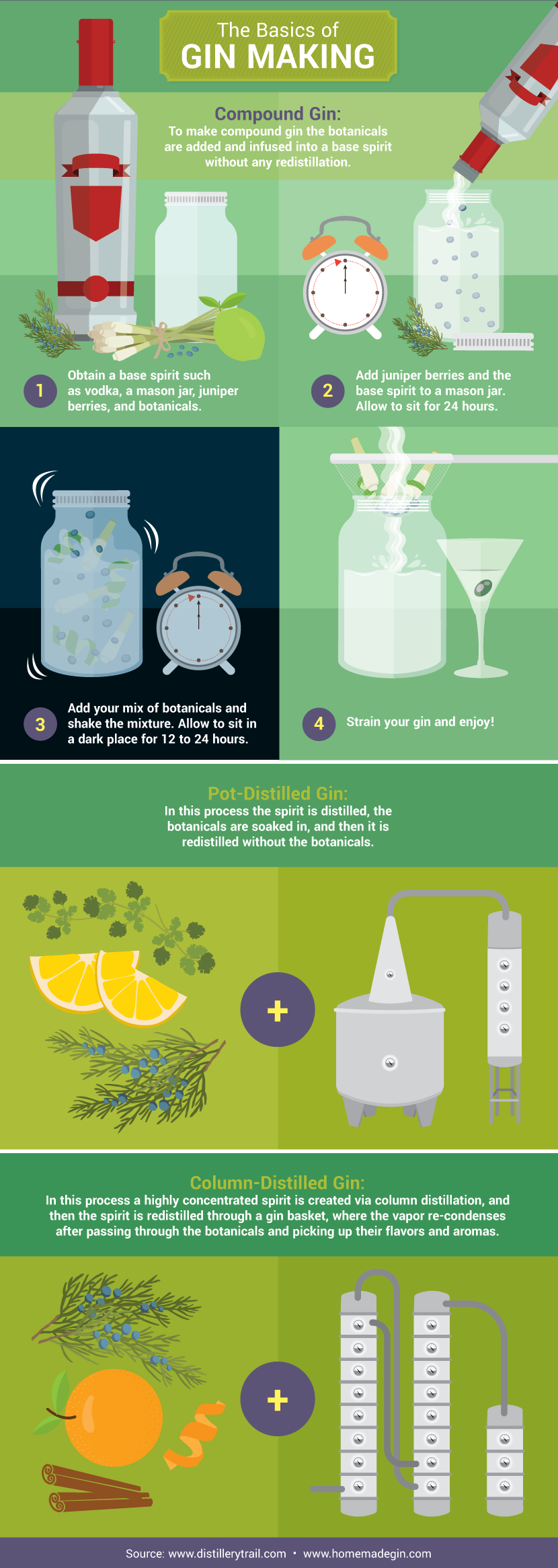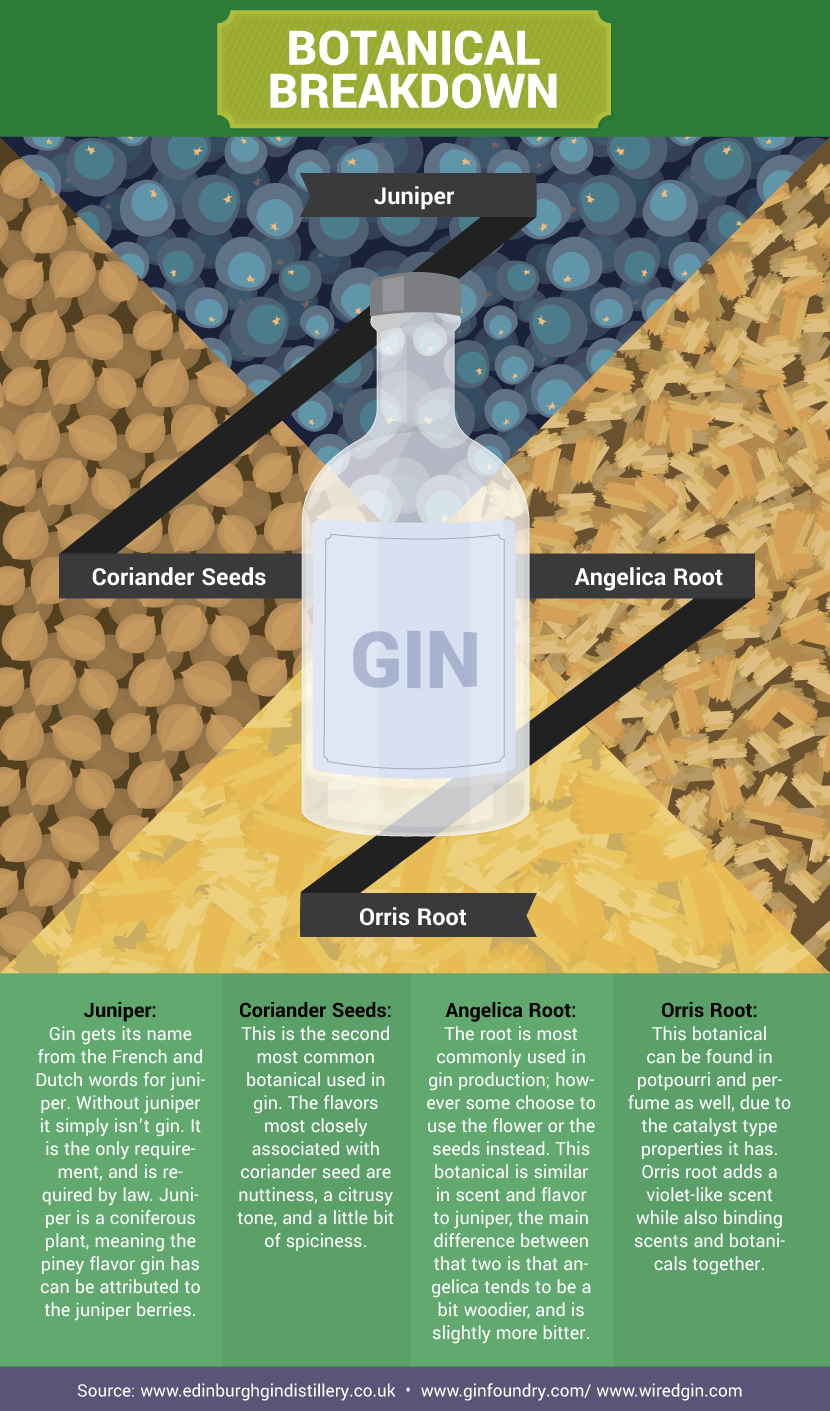A New ‘Gin’eration
Gin, the unsung hero, is a linchpin in any bartender’s arsenal. From crafting a classic martini to concocting the perfect cocktail creations, gin’s robust flavor takes your drinks to the next level.
You might be part of the crowd that thinks the flavor gin offers is a little harsh, or that gin tastes a little like pine trees. If you identify with either of those sentiments, you just haven’t found the right gin for you.
Gin is a versatile spirit, and every single gin has a flavor specifically crafted by that distiller.
How Gin is Made
Very simply, gin is a light-bodied spirit made from mash of a cereal grain, most often corn, barley, rye, and wheat.http://cocktails.about.com/od/spirits/p/gist_gin.htm The base spirit is odorless and flavorless; the aromas and flavors come from the mix of botanicals used in the distillation process.
In layman’s terms, gin is essentially vodka that is infused with neutral flavors.
Each gin has its own unique flavor profile, and each distiller makes its gin a little different. The process each distillery uses is proprietary to their brand, but there are three main methods that each would base their production off.

Compound Gin: This is the process that would be used if you were to make your own gin at home; if you see a bottle of gin made this way on a store shelf, it’s probably best to leave it there.
Opt for compound gin if you’re crafting it yourself! To make compound gin, you start with a base spirit – vodka is commonly used – add the botanicals of your choosing,
allow them to be infused for a day or two, strain the solution, and enjoy! In this process, you are not redistilling at any stage.
Distilled Gin: Also known as pot-distilled gin, this is the process by which a base spirit is distilled, then a mix of botanical ingredients is soaked and infused into the spirit. The botanicals are then removed, and it is redistilled.
Column-Distilled Gin: The main difference in this process is that the botanicals are infused during the distillation process, whether the spirit is vaporized and runs through an infusion chamber or whether the botanicals are suspended in the column during distillation.
In this process, a highly concentrated spirit is distilled, the mix of botanicals is added, and then the spirit is redistilled with botanicals.
Botanical Breakdown
Gin gets its complex flavors and aromas from the botanicals that are carefully selected by each distiller; each botanical offers a unique flavor or aroma that adds to the experience of drinking that gin.
These botanicals all have neutral flavors and characteristics – none are too sweet, and none are sour.
Due to the fact that these botanical blends are carefully selected and crafted by each distiller, they are top-secret and heavily guarded.
Some blends you see on store shelves have as few as four botanicals, and some have many, many more. There is only one legal requirement to making gin – juniper must be used. Juniper berries,
which are in fact not berries at all – they are a seed cone – are what give gin its piney flavor.
From there, botanicals are added to the blend, creating a fuller and unique artisanal flavor.

Common Botanicals and Their Flavors
Gin by Style
London Dry Gin
As the name implies, this is one of the drier styles of gin, a delicate balance of juniper and citrus. This gin can be made anywhere in the world. This gin is not allowed to contain artificial flavors or colors.
Tasting notes: Strong juniper flavor with hints of citrus, very aromatic, and light in body.
Plymouth
This gin can only be produced in Plymouth, England. It is similar in flavor to London dry; however, its tends to have more root-based botanicals, leaving this gin with much earthier flavors.http://drinks.seriouseats.com/2012/06/gin-history-production-types-of-gin-london-dry-vs-old-tom-plymouth-how-gin-is-made.html
Tasting notes: Similar to London dry, but with sweeter and earthier tones.
Genever
This was what came before gin, where gin got its beginning. Genever is different in color and taste – it is much maltier than gin, and similar to whiskey both in production and flavor.
However, most notably, it used juniper, as it was originated in Belgium and the Netherlands, and was distilled for medical purposes.http://drinks.seriouseats.com/2012/06/serious-eats-guide-to-genever-what-is-jenever-history-production-bols.html
Tasting notes: Lemon peel and fennel are two standout flavors, definitely more malt and savoury botanicals in place.
Old Tom
This gin bridges the gap between Genever and London dry. Does not pack a strong punch of juniper like London dry or Plymouth, and has a sweeter quality to it.
Tasting notes: Malty sweetness, with a hint of juniper.
New Wave
This gin is also referred to as New Western, New American, or International-style gin; these titles help classify a very broad grouping of gins. There are no real elements that bind this group together other that the fact that they are all new flavors of gin. Laura Johnson, founder of Distillerista.com told Fix, “(These terms) can simply account for gin which is not predominately juniper-forward. Nine times out of 10, these gins are more citrus-forward.”
This is not your grandfather’s gin; the modern craft gin distillers have created a style of their own. They don’t follow any standard recipe, and are always looking for new ways to push the boundaries.
Think of this craft gin as artwork – the vodka is their blank canvas, juniper is their brush, the colors they choose are the botanicals, and the finished product is far from conventional!
Tasting notes: These gins tend to focus less on juniper and aim to create an artisanal flavor that accentuates floral or citrus botanicals.

A New ‘Gin’eration
Due to the fact that each distiller has its own secret blend of botanicals, every gin you try will vary in flavor. The gin that works for you may depend on whether you’re using it to construct a classic cocktail,
looking to make your very own cocktail creation, or looking to enjoy the simple pleasures a gin and tonic has to offer.
The best way to find the gin that’s right for you and your palate is to dive right in and sample different varieties. Explore the wonderful world of gin!
Embed the article on your site

